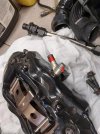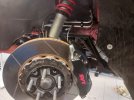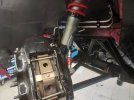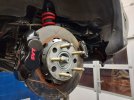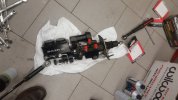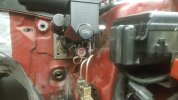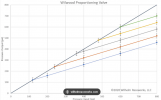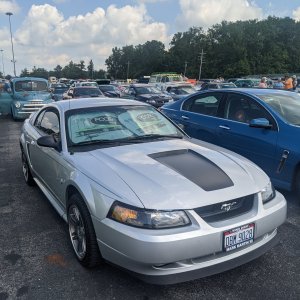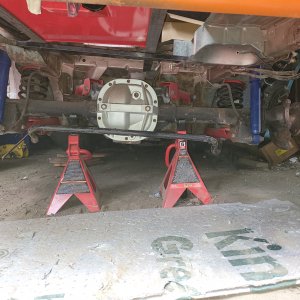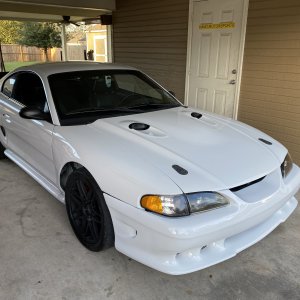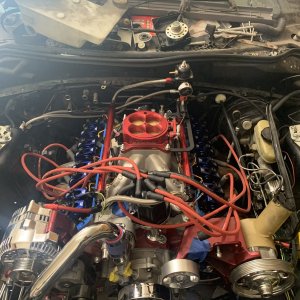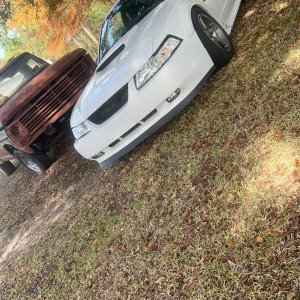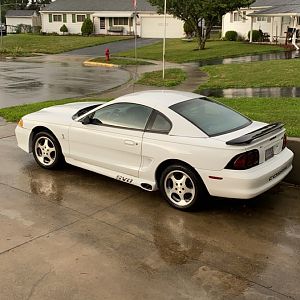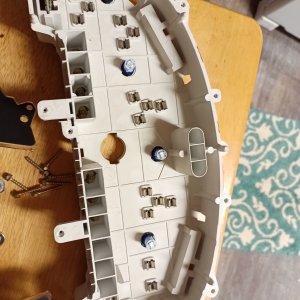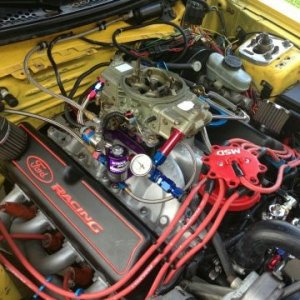garrittpwl
Active Member
I'm back, but this time for some real technical information. what I dont need to hear because I already know is "you shouldnt run the same size front and rear rotors/calipers, the rears should be smaller"
Now that we've got that out of the way lets talk what I actually have going on.
I've acquired through various horse trades, a full TBM F5 caliper setup with bracketry for my car that utilizes a 14 inch rotor on all 4 corners.
I've done the fluid volume vs travel math and the OEM master cylinder has plenty of volume to push the calipers. Especially considering they have minimal travel with the 1.24 inch thick rotors.
My car is a 96 NON ABS hydroboost car and Im running a single wilwood proportioning valve to the rear (along with the oem non abs proportioning valve as well).
I made a hydraulic gauge setup that will allow me to measure the front/rear brake pressure output when you clamp down on the brakes. That said, what should I be looking for front/rear bias percentage wise? Everywhere I read it looks like anywhere between 69/31 to 75/25.
In my mind, the math here is even easier for me since all 4 corners are the same size. I plan on taking a measurement with the aftermarket rear proportioning valve wide open (to get the OEM valve's pressures). And then dialing out the rear from there.
Does this sound like it'll theoretically work?
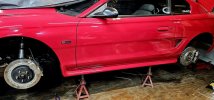
Now that we've got that out of the way lets talk what I actually have going on.
I've acquired through various horse trades, a full TBM F5 caliper setup with bracketry for my car that utilizes a 14 inch rotor on all 4 corners.
I've done the fluid volume vs travel math and the OEM master cylinder has plenty of volume to push the calipers. Especially considering they have minimal travel with the 1.24 inch thick rotors.
My car is a 96 NON ABS hydroboost car and Im running a single wilwood proportioning valve to the rear (along with the oem non abs proportioning valve as well).
I made a hydraulic gauge setup that will allow me to measure the front/rear brake pressure output when you clamp down on the brakes. That said, what should I be looking for front/rear bias percentage wise? Everywhere I read it looks like anywhere between 69/31 to 75/25.
In my mind, the math here is even easier for me since all 4 corners are the same size. I plan on taking a measurement with the aftermarket rear proportioning valve wide open (to get the OEM valve's pressures). And then dialing out the rear from there.
Does this sound like it'll theoretically work?


